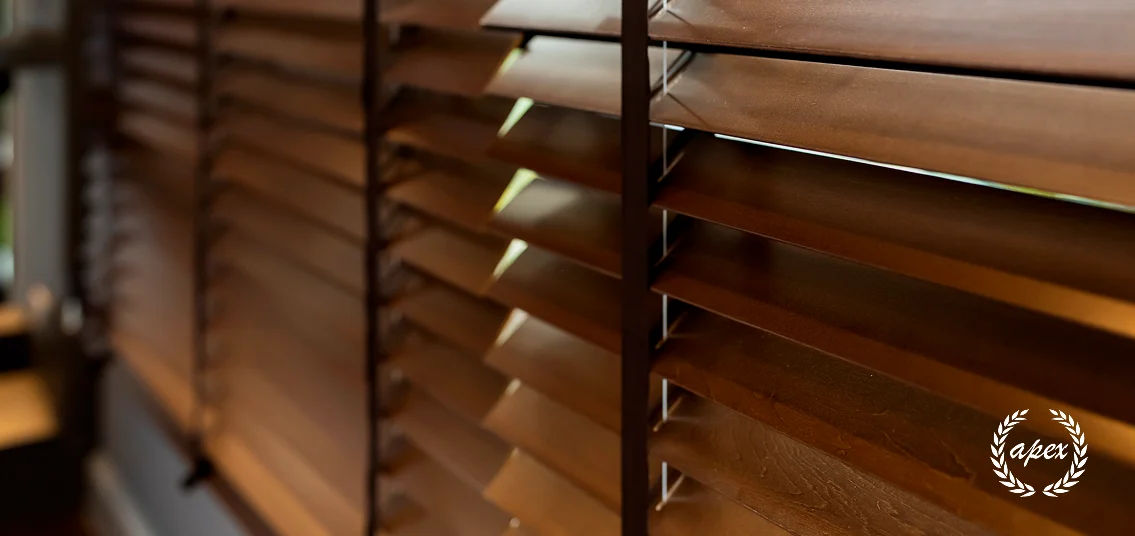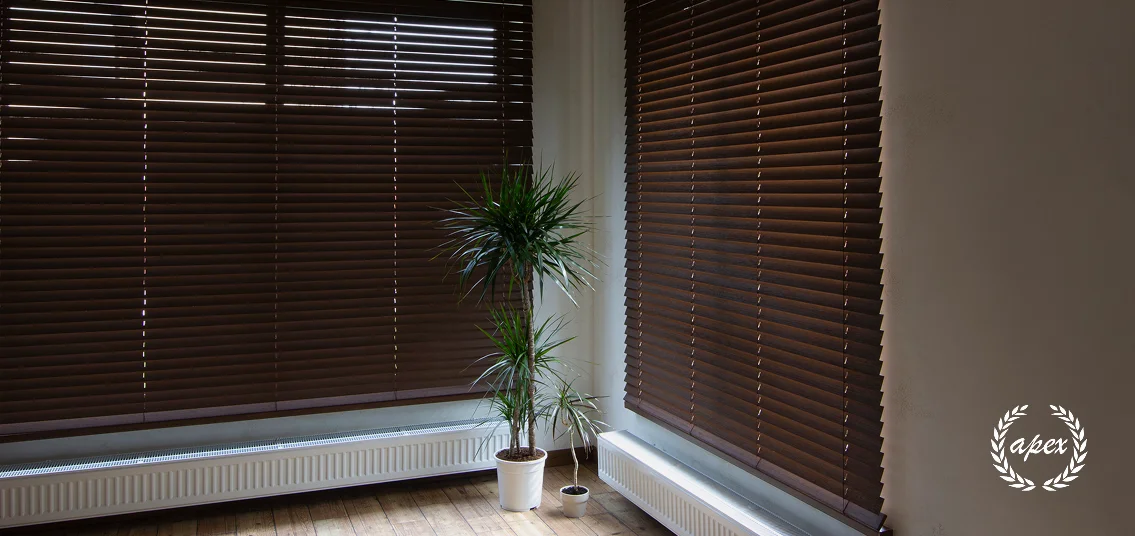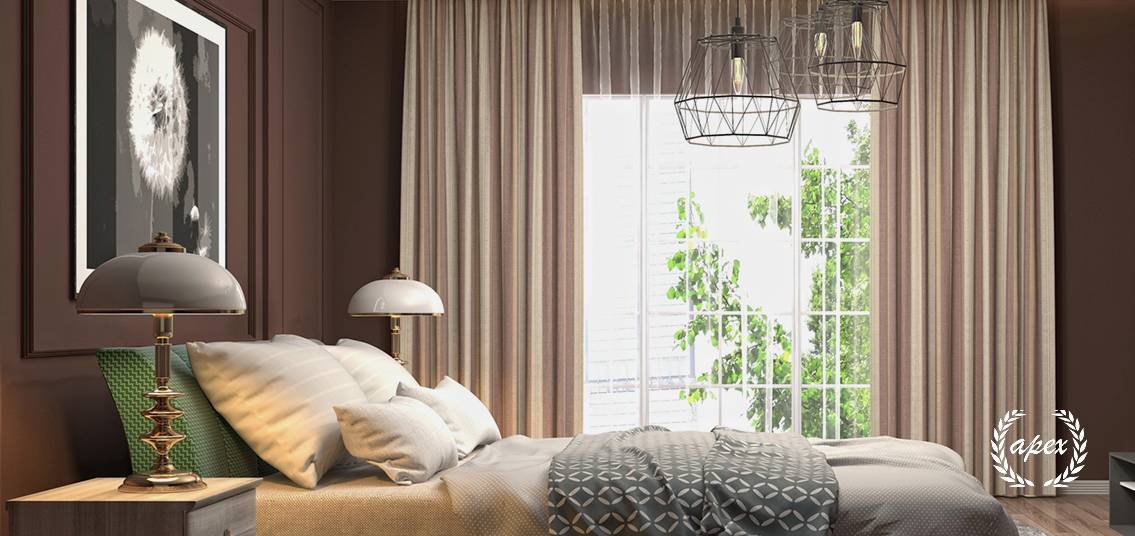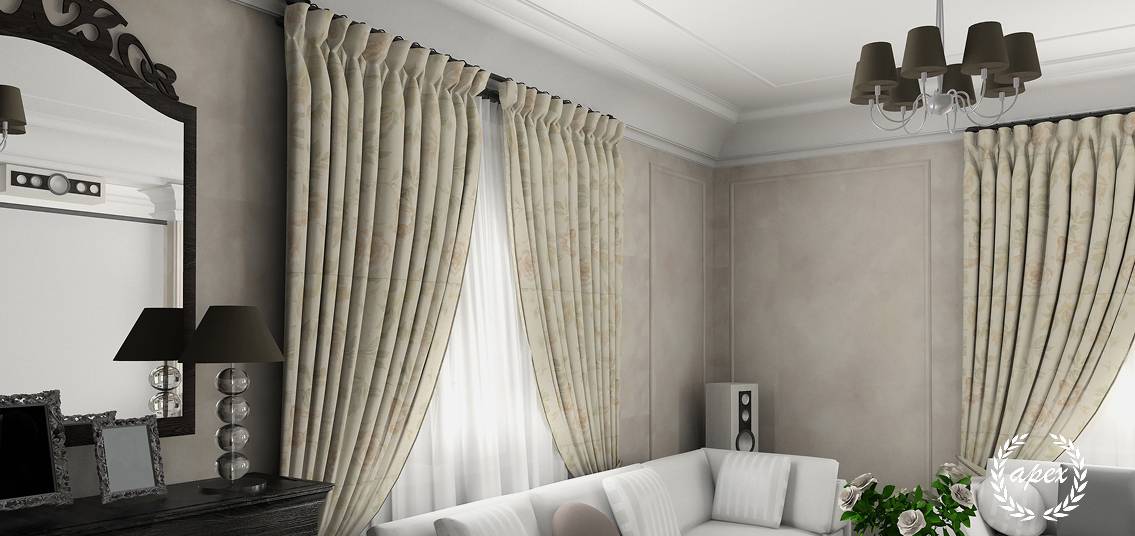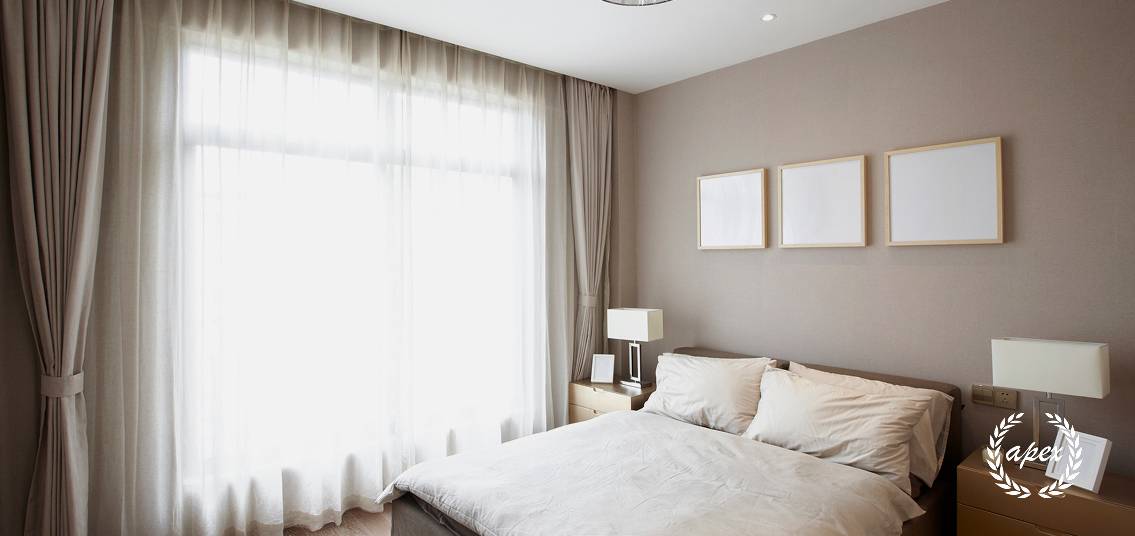If you’re designing a smart home or planning for a tech-forward renovation, modern home window solutions aren’t just about aesthetics—they’re about integration. In 2025, automation, energy efficiency, and seamless design are no longer luxuries. They’re the new standard.
This guide is for homeowners who want window coverings that sync with their lifestyle—not just block the sun.

What Makes a Window Solution ‘Modern’?
- Automation-ready: Works with Google Home, Alexa, Apple HomeKit
- Motorised: Curtains or blinds that open/close via remote, app, or voice command
- Minimalist form factor: Slim tracks, no cords, clean finishes
- Smart scheduling: Timed open/close functions for morning routines or energy efficiency
- Integrated aesthetics: Blends into the architecture and design language
These systems work best when they’re planned early—as part of the renovation, not an afterthought.
Smart Curtain Systems
Best for: Living rooms, master bedrooms, high-ceiling condos
- Ripplefold or pinch-pleat curtains on quiet motorised tracks
- Voice/app control with adjustable speed and memory settings
- Options for single or double-layer (sheer + blackout) setups
Ideal for west-facing units where daily glare timing is predictable
Recommended for elderly or those with mobility needs
Smart Blinds for Functional Zones
Best for: Study rooms, kitchens, balconies
- Roller blinds with app-controlled lift and drop
- Venetian blinds with motorised tilt-only function
- Smart blackout blinds for high privacy needs
Perfect for rooms where light control is key but full curtains aren’t practical
Smart tilt helps reduce screen glare without full blackout
Layering for Flexibility
Many modern homes combine smart blinds with decorative curtains to create both functional and aesthetic depth:
- Living room: Motorised roller blinds for heat + ripplefold curtains for elegance
- Bedroom: Blackout blinds for sleep + sheer curtains for gentle morning light
- Study: Tilt-adjustable venetian blinds + linen sheers for natural ambiance
Layering not only boosts control but also gives your space a tailored, high-end feel.
Common Smart Home Use Cases
| Scenario | Solution |
| You want to wake up naturally | Schedule sheers to open with sunrise |
| Kids forget to close the blinds | App-close them from your phone |
| You’re away for the weekend | Automate curtain movements for security |
| Watching movies | Scene-based blackout activation via smart system |
| Hosting a dinner party | Set a mood by drawing sheers + dimming lights |
Smart Brands We Support (2025 Ready)
Apex Blinds integrates with a curated selection of the most reliable and widely adopted smart automation platforms in Singapore. Each system offers a unique edge, allowing you to match your lifestyle needs with your preferred smart ecosystem.
- Somfy TaHoma: Known for its stability and robust integration, Somfy TaHoma supports complex home automation scenarios with smooth performance. It’s compatible with Google Assistant, Amazon Alexa, Apple HomeKit, and allows for multi-device automation such as scheduling, sunlight sensors, and scene-setting.
- Nice Yubii: Sleek and energy-efficient, Nice Yubii excels in wireless motorisation with an elegant control experience. It’s ideal for homeowners who want a seamless interface across blinds, curtains, lighting, and even gates or awnings—all in one app.
- Tuya: A smart protocol that works behind many white-label and branded automation products, Tuya allows for cross-brand compatibility. It’s a great entry point for homeowners who already use Tuya-compatible lights, sensors, or switches and want to integrate blinds into the same app.
- Simon: Simon’s modular smart control panels are popular in premium condominiums and offer intuitive control through tactile switches and app integration. Perfect for design-conscious homeowners who want built-in elegance.
- KNX: An advanced automation standard used in high-end and commercial smart buildings. KNX allows for full building control, from lighting and HVAC to blinds, curtains, and even access systems—all through a unified, centralised platform.
- Fibaro: Recognised for its stylish design and Z-Wave compatibility, Fibaro offers powerful yet compact automation modules that support voice control, scene creation, and real-time system feedback. Ideal for retrofitting and system flexibility.
Whether you’re building a fully integrated smart home or upgrading one room at a time, these systems give you the flexibility to grow and adapt your window automation with confidence.
Each platform can be customised to suit your ceiling height, fabric weight, automation scenes, and ecosystem preferences—from standalone control to full-home integration.
Planning Tips for Smart Window Solutions
- Consider power points: Ensure you have nearby power sources for motor systems
- Align with renovation schedule: Smart tracks should be installed before false ceilings or pelmets are closed up
- Choose fabric wisely: Lightweight fabrics pair better with quieter motor tracks; blackout materials need stronger motors
- Test your remote and app functions early: Work out any sync issues before move-in day
Modern Design Meets Smart Function
Today’s modern home window solutions are designed to be invisible when not in use, and effortless when needed.
- No exposed wiring or bulky motors
- Low-noise glide systems that don’t disrupt quiet spaces
- Pre-set open/close percentages for custom light settings
From mood lighting to temperature control, your window coverings should respond to how you live—not the other way around.
Final Thoughts: Smart Homes Start with Smarter Windows
When you automate your window treatments, you gain more than convenience—you gain control over your space. You simplify your routines, enhance your comfort, and tie your interior together.
Whether you’re planning a Muji-inspired retreat or a sleek smart condo, Apex helps you select, install, and calibrate the modern home window solutions that support your lifestyle.
Book a smart window consultation, and get expert advice on blending design and automation.

